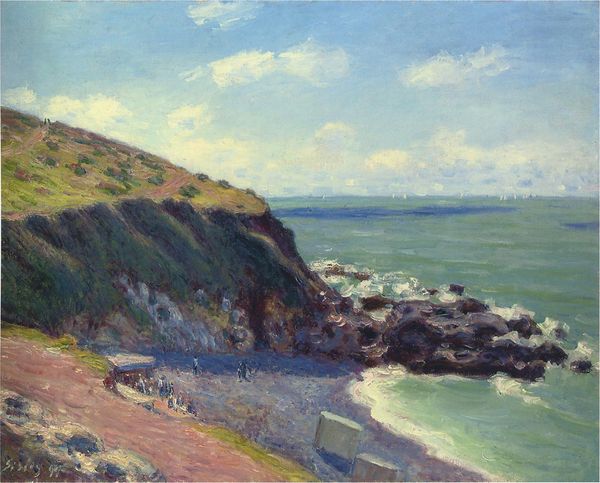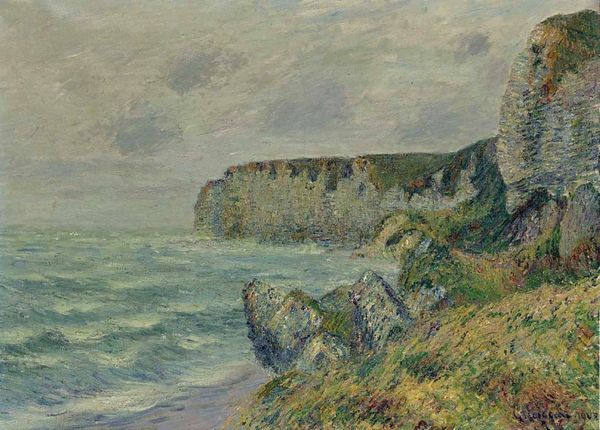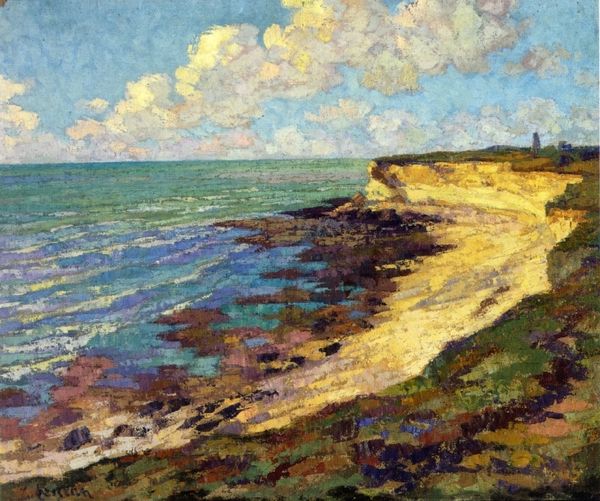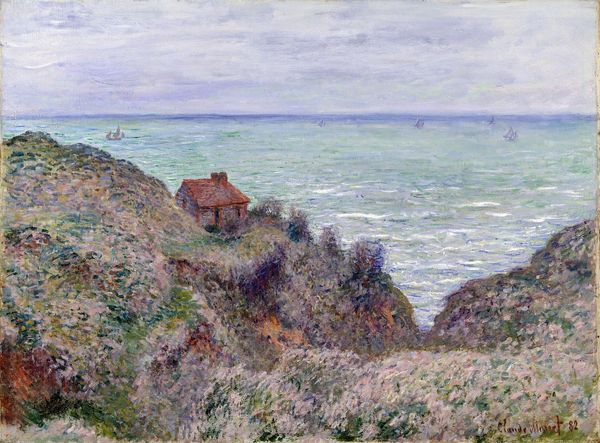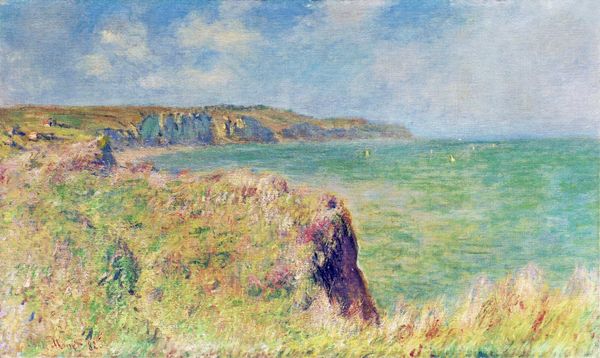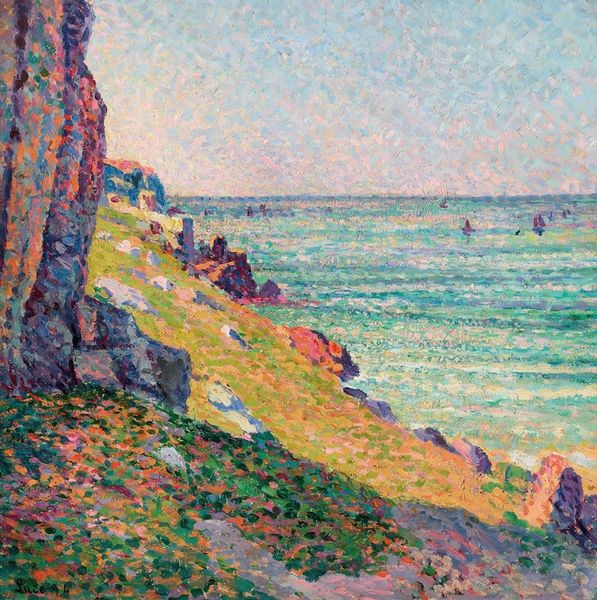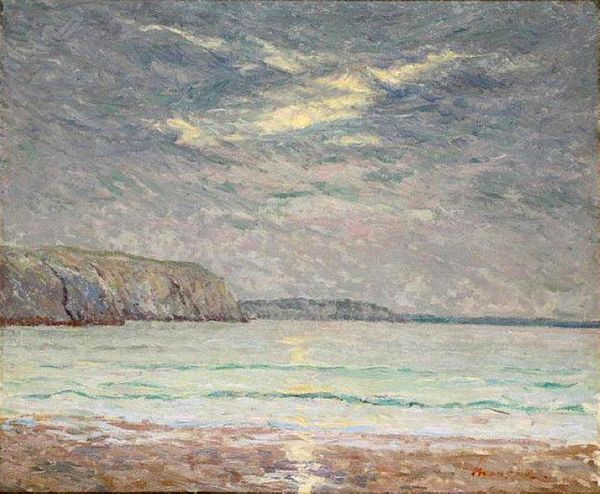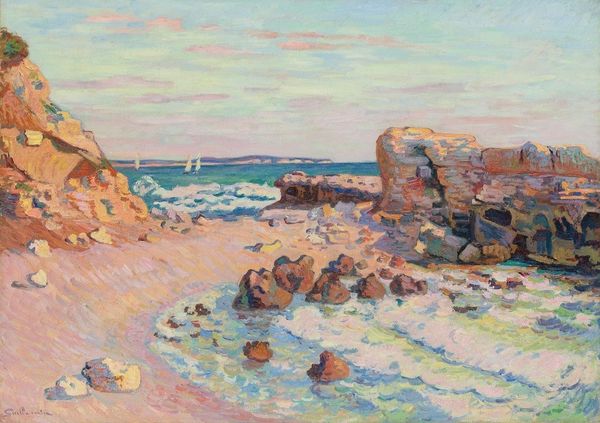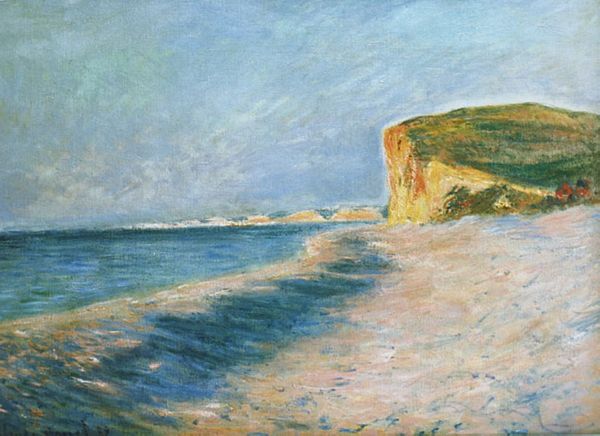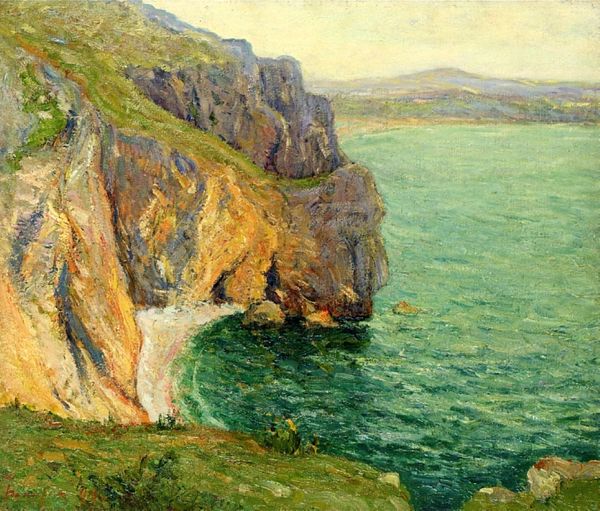
Dimensions: overall: 54 x 64.8 cm (21 1/4 x 25 1/2 in.) framed: 78.9 x 90.5 x 10.2 cm (31 1/16 x 35 5/8 x 4 in.)
Copyright: National Gallery of Art: CC0 1.0
Curator: Let’s delve into Henri Moret's "The Island of Raguenez, Brittany," created between 1890 and 1895. It exemplifies his engagement with the Impressionist style en plein air. What’s your initial take? Editor: My first impression is one of solidity. The construction of that building, its thatched roof, and the sheer density of the landscape give it a tactile weight, despite the Impressionistic brushwork. I want to know how the house was built, how that landscape was shaped by both natural forces and labor. Curator: I find it evokes a feeling of solitude, almost isolation. Considering Brittany’s complex history as a Celtic nation subsumed into France, the house takes on a metaphorical weight. Who lived there, and what social and political currents influenced their existence? The painting subtly speaks to the region's identity struggles. Editor: Absolutely. And thinking about the materiality—oil paint, likely applied with brushes of specific manufacture—it highlights the artist's labor too, as well as the industrial processes that went into the very making of this artwork. I wonder about the cost of materials and their impact on artistic freedom during that time. Curator: The island becomes a canvas where we see intersectional elements. You see that single building; a stark emblem of permanence against the changeable sea. This juxtaposition can prompt conversations about resilience, about people making home amid nature's power. Considering colonialism, the periphery's marginalization becomes highlighted. Editor: And the physical environment is a central player too. This is labor extracted from both the inhabitants and the landscape to make both the building, and the painting itself, possible. We should contemplate how the value of “landscape art” might often mask the exploitation involved in its creation and subject. Curator: Yes. And it prompts us to consider not only environmental impact, but human narratives intersecting at that time. Moret allows us to access the narratives about Breton identity at the turn of the century and encourages engagement and questioning. Editor: By thinking about how each element came together through a variety of processes to portray a location during its cultural changes, it gives us space for conversations regarding the art-making labor that produced an idyllic representation of Brittany that contrasts against the raw physicality of the region.
Comments
No comments
Be the first to comment and join the conversation on the ultimate creative platform.


